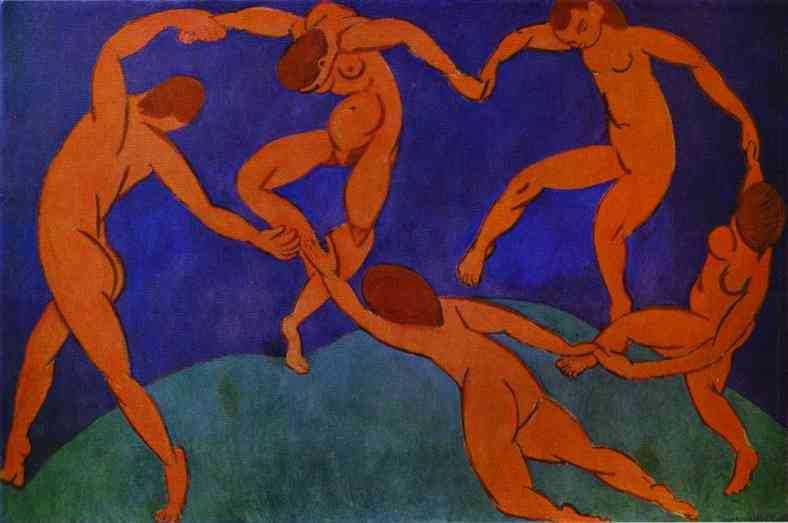Today is May Day, so this week’s appropriately festive picture is The Dance, by Henri Matisse. It was one of two monumental panel pictures created by the artist in 1910 for his principal patron, the Russian businessman Sergei Schukhin, who originally hung them on the staircase of his mansion in Moscow. Together with its companion piece, Music, the work can now be seen in the State Hermitage Museum in Leningrad.
“I like dance very much,” Matisse said, explaining the genesis of this stark and brightly coloured depiction of naked, convulsively cavorting figures. “Dance is an extraordinary thing: life and rhythm. It is easy for me to live with dance. When I had to compose a dance for Moscow , I had just gone to the Moulin de la Galette on a Sunday afternoon. And I watched the dancing. I especially watched the farandole … This farandole was very gay. The dancers hold each other by the hands, they run across the room, and they wind around the people who are standing around … Back at home, I composed my dance on a canvas of four meters, singing the same tune that I had heard at the Moulin de la Galette, so that the entire composition and all the dancers are in harmony and dance to a single rhythm.”
In fact, the origins of The Dance are a little more complicated than the painter’s account might suggest. Some four years earlier, Matisse had created his first large canvas on the theme of Arcadia, that mythical earthly paradise where man lives in perfect harmony with nature. The Joy of Life was an extremely influential picture, in which Matisse pushed to unprecedented extremes the expressive, non-naturalistic language of painting that he had been developing since the early...


